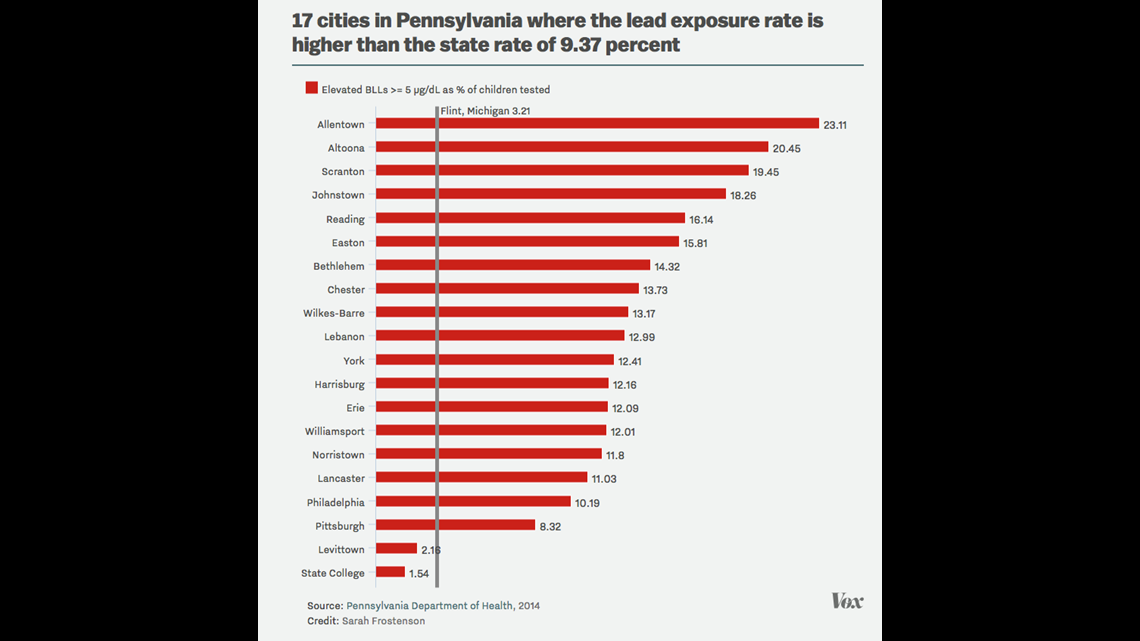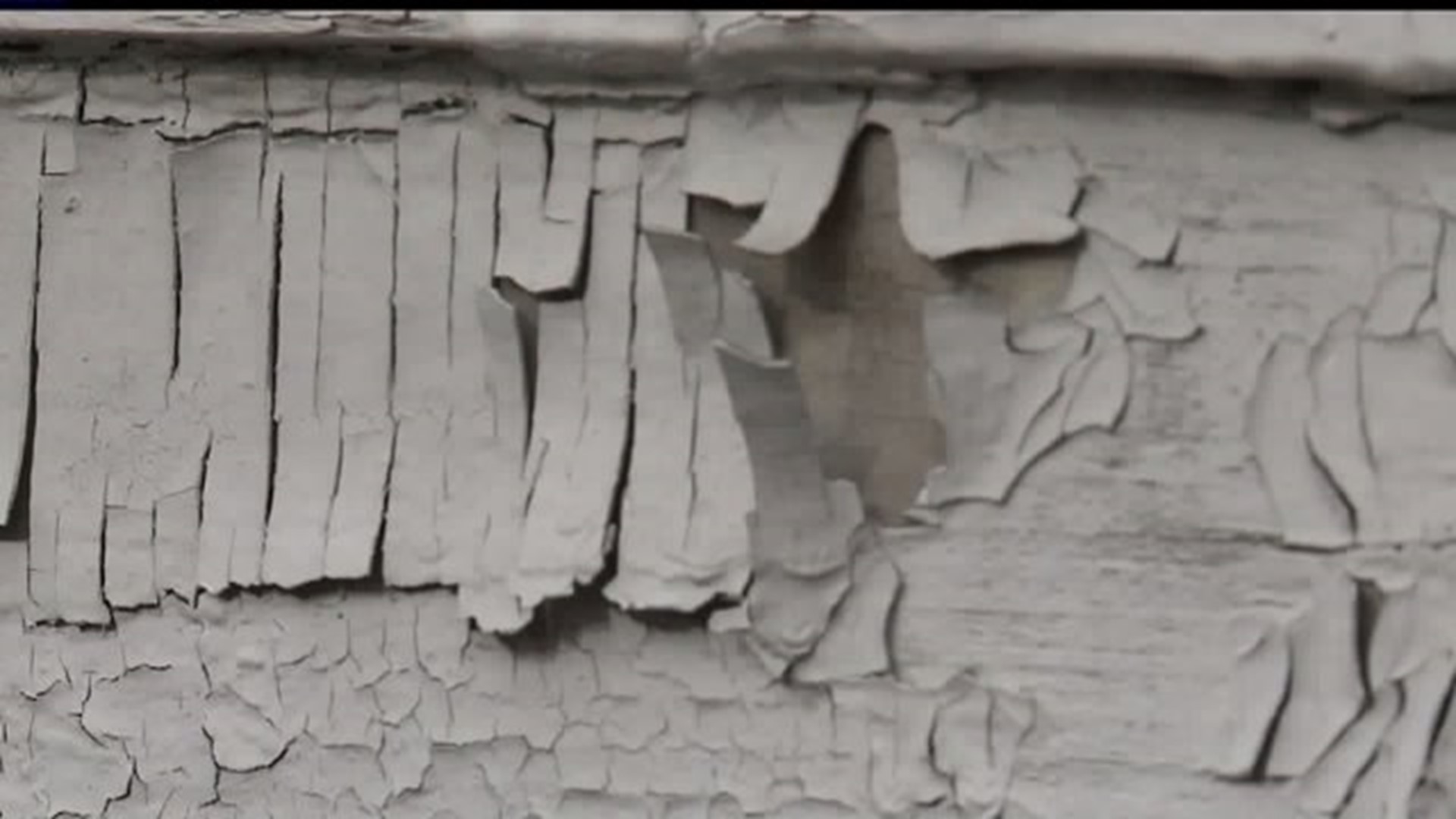HARRISBURG, Pa. -- A 2014 Pennsylvania Department of Health study, released in October, indicates 18 cities in Pennsylvania have higher levels of lead exposure than Flint, Michigan, which is undergoing a lead crisis in its water supply.
The study, brought to light by an article on national news site VOX.com, lists Harrisburg, York, Lebanon, and Lancaster as cities which are subject to unsafe levels of lead. However, the study also distinctly says Pennsylvania's high lead levels are the result of lead-based paint chipping away from deteriorating homes, and not contaminated water, as is the case in Michigan.
According to the Department of Health report, Lebanon's lead exposure rate is 12.99 percent, York is 12.41 percent, Harrisburg is 12.16 percent, and Lancaster is 11.03 percent. The rate indicates the percentage of tested children age 7 or younger who had unsafe levels of lead in their blood. Essentially, the study says one in every eight or nine children in these cities has levels of lead in their blood which should be addressed by a health care professional.
By comparison, the lead exposure rate in Flint, Michigan is 3.21 percent.


FOX43 reached out to the Pennsylvania Department of Health multiples times Thursday asking to speak with Secretary Dr. Karen Murphy. No one from the office was made available. Spokesperson Amy Worden said the Department of Health was consulting with the Department of Environmental Protection to determine if the numbers listed in the DOH report were strictly because of lead-based paint and not water contamination. Worden said an answer would come by the end of the day, which it did not.
The City of Harrisburg did not comment until after it had heard from the Department of Health. Roy Christ, the city's Director on Building and Housing, told FOX43 that Harrisburg has been actively addressing lead concerns, adding the city is safe, but admitting it does have issues with lead.
"We weren’t surprised because we’ve been dealing with this issue for a long time," Christ said of the numbers in the Dept. of Health report. "When I say that it's not meant to be callous. It's to say we’ve been proactive in this process for a long time."
In August, Harrisburg was awarded a $3.7 million HUD grant to remove lead and other hazardous materials from the city's aging homes. Christ estimates more than 90 percent of Harrisburg's homes were built before the 1970's, when lead-based paint was outlawed. The city's program to combat lead exposure involves testing and, if necessary, abating a home immediately thereafter.
In the previous grant cycle, Christ estimated the city abated 160 homes. He estimates with this round of HUD grant money, they will be able to rid 180 to 200 homes of its lead-based material.
"It’s a very aggressive program and it's very grass roots," Christ says. "The water is safe, but there are environmental things, and that’s why we’re here."
Lead paint can lead to serious health concerns, especially for young children. When lead paint crumbles into dust, breathing it in can cause nausea, headaches, and in worst cases, organ damage and death.
18 cities with lead exposure higher than Flint, Michigan (3.21%) According to a 2014 study from the Pennsylvania Department of Health
Allentown: 23.11%
Altoona: 20.45%
Scranton: 19.45%
Johnstown: 18.26%
Reading: 16.14%
Easton: 15.81%
Bethlehem: 14.32%
Chester: 13.73%
Wilkes-Barre: 3.17%
Lebanon: 12.99%
York: 12.41%
Harrisburg: 12.16%
Erie: 12.09%
Williamsport: 12.01%
Norristown: 11.8%
Lancaster: 11.03%
Philadelphia: 10.19%
Pittsburgh: 8.32%

